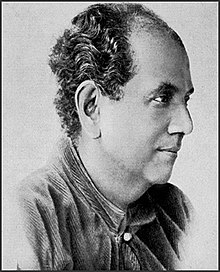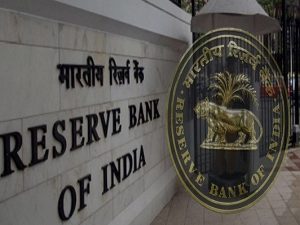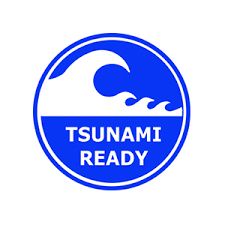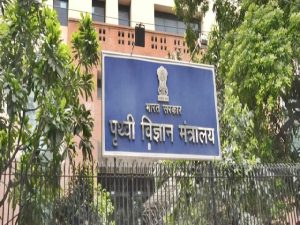Daily Current Affairs for Government Exams:
Today Current Affairs: 7th August 2020 for UPSC IAS exams, State PSC exams, SSC CGL, State SSC, RRB, Railways, Banking Exam & IBPS, etc
Table of Contents
Contents:
- ITER Organization
- 150th Birth Anniversary of Abanindranath Tagore on 7th August 2020.:
- EWS quota:
- The Reserve Bank of India (RBI) has released the Monetary Policy Report for the month of August 2020.:
- Revised PSL Norms::
- Tsunami Ready:
- Ministry of Earth Sciences (MoES) National Awards for excellence in Earth System Science have been announced.:
- Other important current affairs:
1. ITER Organization :

The ITER Organization is celebrating the Start of Assembly of the ITER Tokamak with a ceremony at Saint-Paul-Lez-Durance, France. The Celebration has been hosted virtually by French President Emmanuel Macron.
- ITER is one of the most ambitious energy projects in the world today.
- In southern France, 35 nations are collaborating to build the world’s largest tokamak, a magnetic fusion device that has been designed to prove the feasibility of fusion as a large-scale and carbon-free source of energy based on the same principle that powers our Sun and stars.
- ITER will be the first fusion device to produce net energy.
- ITER will be the first fusion device to maintain fusion for long periods of time.
- And ITER will be the first fusion device to test the integrated technologies, materials, and physics regimes necessary for the commercial production of fusion-based electricity.
- The ITER Members—China, the European Union, India, Japan, Korea, Russia and the United States—are now engaged in a 35-year collaboration to build and operate the ITER experimental device, and together bring fusion to the point where a demonstration fusion reactor can be designed.
2.150th Birth Anniversary of Abanindranath Tagore on 7th August 2020.:

National Gallery of Modern Art, New Delhi is organizing the virtual tour titled “The Great Maestro | Abanindranath Tagore” to commemorate the 150th Birth Anniversary of Abanindranath Tagore on 7th August 2020.
About Abanindranath Tagore:
- Abanindranath Tagore, the nephew of Rabindranath Tagore, was one of the most prominent artists of Bengal school of art in India. He was the first major supporter of swadeshi values in Indian art.
- He first created the ‘Indian Society of Oriental Art’ and later went on to establish the Bengal school of art.
- He believed that Indian art and its art forms gave importance to spirituality as opposed to the West which stressed materialism, thus rejecting it.
- His idea of modernizing Mughal and Rajput paintings eventually gave rise to modern Indian painting, which took birth at his Bengal school of art.
- Most of his works revolved around Hindu philosophy.
- In his later works, Abanindranath started integrating Chinese and Japanese calligraphic traditions into his style. The intention behind this move was to construct an amalgamation of the modern pan-Asian artistic tradition and the common elements of Eastern artistic and spiritual culture.
- Famous paintings are: Bharat Mata, The Passing of Shah Jahan (1900), My Mother (1912–13), Fairyland illustration (1913), Journey’s End (circa 1913).
- Literature: Abanindranath is also regarded as a proficient and accomplished writer.
- Most of his literary works were meant for children. Some of his books like ‘BudoAngla’, ‘KhirerPutul’ and ‘Rajkahini’ are the best examples of Bengali children’s literature.
- William Rothenstein helped Rabindranath Tagore to publish his work ‘Gitanjali’ in English.
- Arabian Nights series was one of his notable works.
3.EWS quota:

The Supreme Court has referred to a five-judge Bench the “substantial question of law” whether the grant of 10% reservation to economically weaker sections of the society is unconstitutional and violates the 50% ceiling cap on quota declared by the court itself.
- A reference to a larger Bench means that the legal challenge is an important one.
- As per Article 145(3) of the Constitution, “the minimum number of Judges who are to sit for the purpose of deciding any case involving a substantial question of law as to the interpretation of this Constitution” shall be five.
- The Supreme Court rules of 2013 also say that writ petitions that allege a violation of fundamental rights will generally be heard by a bench of two judges unless it raises substantial questions of law.
- In that case, a five-judge bench would hear the case.
- The law was challenged primarily on two grounds.
- First, it violates the Basic Structure of the Constitution. This argument stems from the view that the special protections guaranteed to socially disadvantaged groups are part of the Basic Structure and that the 103rd Amendment departs from this by promising special protections on the sole basis of economic status. Although there is no exhaustive list of what forms the Basic Structure, any law that violates it is understood to be unconstitutional.
- Second, it violates the SC’s 1992 ruling in Indra Sawhney & Ors v Union of India, which upheld the Mandal Report and capped reservations at 50%. In the ruling, the court held that economic backwardness cannot be the sole criterion for identifying backward class.
The issue:
- The economic reservation was introduced in the Constitution by amending Articles 15 and 16 and adding clauses empowering the state governments to provide reservation on the basis of economic backwardness.
- The validity of the Constitutional Amendment was challenged, saying the 50% quota limit was part of the Basic Structure of the Constitution.
- A three-judge bench had refused to stay the implementation of the Constitution (103rd Amendment) Act, which provides the 10% quota.
- The Centre had argued that it was every State’s prerogative to provide a 10% economic reservation in State government jobs and admissions in State-run education institutions.
- Whether or not to provide reservation to the economically weaker section (EWS) of the society for appointment in State government jobs and for admission to State government educational institutions, as per provisions of the newly inserted Articles 15(6) and 16(6) of the Constitution, is to be decided by the State government concerned.
- The government also argued that under Article 46 of the Constitution, part of Directive Principles of State Policy, it has a duty to protect the interests of economically weaker sections.
- Countering the claims that the amendment violates the Indra Sawhney principle, the government relied on a 2008 ruling— Ashok Kumar Thakur v Union of India, in which the SC upheld the 27% quota for OBCs.
- The argument is that the court accepted that the definition of OBCs was not made on the sole criterion of caste but a mix of caste and economic factors, to prove that there need not a sole criterion for according reservation.
4. The Reserve Bank of India (RBI) has released the Monetary Policy Report for the month of August 2020.:

RBI has released the Monetary Policy Report for the month of August 2020.
- The Monetary Policy Report is published by the Monetary Policy Committee (MPC) of RBI.
- The MPC is a statutory and institutionalized framework under the RBI Act, 1934, for maintaining price stability, while keeping in mind the objective of growth.
- The MPC determines the policy interest rate (repo rate) required to achieve the inflation target (4%).
- The Governor of RBI is ex-officio Chairman of the MPC.
Key Points
Policy Rates Unchanged:
- The Repo rate remains at 4% and the reverse repo rate at 3.35%.
- Repo rate is the rate at which RBI lends money to commercial banks.
- Reverse repo rate is the rate at which the RBI borrows money from commercial banks within the country.
- RBI has kept the policy rates unchanged because of rising retail inflation levels.
- Retail inflation (measured by the Consumer Price Index – CPI) rose to 6.09% in June 2020 from 5.84% in March, breaching the central bank’s medium-term target of 4±2%.
- This inflation range (4% within a band of +/- 2%) was recommended by the committee headed by Urjit Patel in 2014.
Loan Restructuring:
- RBI has allowed banks to restructure loans to reduce the rising stress on incomes and balance sheets of large corporates, Micro, Small, and Medium Enterprises (MSMEs) as well as individuals.
- A large number of firms that otherwise maintain a good track record are facing the challenge as their debt burden is becoming disproportionate, relative to their cash flow generation abilities.
- However, only those borrowers will be eligible for restructuring whose accounts were classified as standard and not in default for more than 30 days with any lending institution as on 1st March, 2020.
- All other accounts will be considered for restructuring under the Prudential Framework issued by the RBI in 2019, or the relevant instructions as applicable to specific categories of lending institutions where the prudential framework is not applicable.
- The restructuring efforts may or may not include a moratorium on installment repayments.
- RBI has left the decision of moratorium on banks, with an eye on averting such loans from slipping into non-performing assets.
- The loan restructuring scheme will be worked out by a committee headed by KV Kamath (former ICICI Bank Chairman).
Liquidity Support:
- An additional special liquidity facility of Rs.10,000 crore, equally to be split between the National Bank for Agriculture and Rural Development (NABARD) and the National Housing Bank (NHB) to help small financiers and home loan companies amid Covid-19 difficulties.
- It can be noted that a higher share of moratoriums are being availed by the retail borrowers which has created the need for such liquidity support to lenders.
- The liquidity facility to both NABARD and NHB will be offered at the policy repo rate.
Growth Projection:
- Economic activity had started to recover from the lows of April-May 2020 following the uneven reopening of some parts of the country in June 2020.
- However, fresh Covid-19 infections have forced renewed lockdowns in several cities and states, and economic indicators have leveled off.
- The recovery in the rural economy is expected to be robust, buoyed by the progress in Kharif sowing.
- Manufacturing firms responding to the RBI’s industrial outlook survey expect domestic demand to recover gradually from the second quarter of 2020-21 and sustain through the first quarter of 2021-22.
- For 2020-21 as a whole, real Gross Domestic Product (GDP) growth is expected to be negative. Early containment of the pandemic may improve the outlook.
5.Revised PSL Norms::

The Reserve Bank of India has assigned priority sector lending (PSL) status to India’s startup sector.
- RBI opening up more funds for lending to startups is a very positive step. Startups have not had easy access to debt, stymied by traditional lender metrics of creditworthiness.
- This is a huge booster as sufficient funding and user adoption are two primary challenges for Indian entrepreneurs.
- Besides, Startups have mostly relied on expensive venture debt. This move will help startups free up their equity and raise low-cost debt.
Priority Sector Lending:
- It means those sectors which the Government of India and Reserve Bank of India consider as important for the development of the basic needs of the country and are to be given priority over other sectors.
- The banks are mandated to encourage the growth of such sectors with adequate and timely credit.
RBI guidelines for PSL for scheduled commercial banks:
- 40% of the total net bank credit should go to priority sector advances.
- 10% of the priority sector advances or 10% of the total net bank credit, whichever is higher should go to weaker sections.
- 18% of the total net bank credit should go to agricultural advances. Within the 18 percent target for agriculture, a target of 8 percent of Adjusted Net Bank Credit (ANBC) or Credit Equivalent Amount of Off-Balance Sheet Exposure, whichever is higher is prescribed for Small and Marginal Farmers, to be achieved in a phased manner.
- 5 of ANBC or Credit Equivalent Amount of Off-Balance Sheet Exposure, whichever is higher should go to Micro enterprises.
- Priority Sector includes the following categories:
- Agriculture, Micro, Small, and Medium Enterprises (MSME), Export Credit, Education, Housing.Social Infrastructure, Renewable Energy,Others
- Priority Sector Lending Certificates (PSLCs) are a mechanism to enable banks to achieve the priority sector lending target and sub-targets by the purchase of these instruments in the event of a shortfall. This also incentivizes surplus banks as it allows them to sell their excess achievement over targets thereby enhancing lending to the categories under the priority sector.
6.Tsunami Ready:

Odisha has achieved another milestone in disaster management. Venkatraipur in Ganjam and Noliasahi in Jagatsinghpur have been recognized by UNESCO-IOC as Tsunami-Ready Communities.
About Tsunami Ready:
- Tsunami Ready is a community performance-based program.
- Initiated by the Intergovernmental Oceanographic Commission (IOC) of UNESCO to promote tsunami preparedness through the active collaboration of public, community leaders, and national and local emergency management agencies.
- Objectives of the program:
- To improve the coastal community’s preparedness for tsunami emergencies.
- To minimize the loss of life and property.
- To ensure a structural and systematic approach in building community preparedness.
About the Intergovernmental Oceanographic Commission (IOC):
- IOC-UNESCO was established in 1960 as a body with functional autonomy within UNESCO and is the only competent organization for marine science within the UN system.
- The purpose of the Commission is to promote international cooperation and to coordinate programs in research, services, and capacity-building, in order to learn more about the nature and resources of the ocean and coastal areas and to apply that knowledge for the improvement of management, sustainable development, the protection of the marine environment, and the decision-making processes of its Member States.
- The IOC is recognized through the United Nations Convention on the Law of the Sea (UNCLOS) as the competent international organization in the fields of Marine Scientific Research and Transfer of Marine Technology.
7. Ministry of Earth Sciences (MoES) National Awards for excellence in Earth System Science have been announced.:

This year the Life Time Excellence Award is being awarded to Professor Ashok Sahni for his significant contribution in the field of Geology, Vertebrate Paleontology, and Biostratigraphy.
- The National Award for Ocean Science & technology is being awarded to Dr. V. V. S. S. Sarma, Senior Principal Scientist, CSIR-National Institute of Oceanography, Vishakapatnam, and Dr. M. Ravichandran, Director, National Centre for Polar and Ocean Research, Goa.
- The National Award for Atmospheric Science & technology will be presented to Dr. S. Suresh Babu, Scientist-SF, VSSC, Thiruvananthapuram.
- The National award for Geoscience & technology will be presented to N. V. Chalapathi Rao Department of Geology, Banaras Hindu University, Varanasi.
- The National Award for Ocean Technology will be presented to Dr. M. A. Atmanand, Director, National Institute of Ocean Technology, Chennai.
- Lidita D. S. Khandeparker, Senior Scientist, CSIR-National Institute of Oceanography, Goa will receive the Anna Mani award for a woman scientists.
- The Young Researcher Awards will be presented to Dr. Indra Sekhar Sen, Indian Institute of Technology Kanpur and Dr. Arvind Singh Physical Research Laboratory (PRL), Ahmedabad for their outstanding work in Earth System Science.
Other important current affairs:
1. National Handloom Day is being organized on August 7 by the Ministry of Textiles.
- 7th August was chosen as the National Handloom Day to commemorate the Swadeshi Movement which was launched on the same date in the year 1905.
- The objective is to generate awareness about the Handloom Industry among the public and its contribution to socio-economic development.
2. The country’s first Kisan Special Parcel Train or Kisan Rail will start from August 7, 2020, to provide a seamless supply of perishable produce.
- The train will transport material between Maharashtra’s Devlali and Bihar’s Danapur Railway station. It will be covering a distance of 1,519 kilometers in around 32 hours.
- The Kisan Rail will carry fruits and vegetables and will make stoppages at several stations and pick-up and deliver them. This will help in bringing perishable agricultural products like vegetables, fruits to the market in a short period of time.
- The Kisan Rail train with frozen containers is expected to build a seamless national cold supply chain for perishables, inclusive of fish, meat, and milk.
- Finance Minister Nirmala Sitharaman had announced to start ‘Kisan Rail’ in the current year’s Budget, for providing a seamless supply chain of perishable produce.
3. Former Jammu and Kashmir Lieutenant Governor GC Murmu was recently appointed as the new Comptroller and Auditor General of India (CAG).
- The Constitution of India provides for an independent office of the Comptroller and Auditor General of India (CAG) in chapter V under Part V.
- The CAG is mentioned in the Constitution of India under Article 148 – 151.
- He is the head of the Indian Audit and Accounts Department.
- He is the guardian of the public purse and controls the entire financial system of the country at both the levels- the center and state.
- His duty is to uphold the Constitution of India and the laws of Parliament in the field of financial administration.
4. The United States of America has urged United Nations members not to support Cuba’s bid to join the United Nations Human Rights Council (UNHRC).
- The USA has accused Cuba of “trafficking” its doctors under the guise of humanitarian missions.
- Cuba’s sale of medical services is its main source of foreign exchange.
- Cuba has a generally respected healthcare system with 90,000 medical workers for a population of 1.1 crore.
- It has a high life expectancy (79.74 years in 2016) and a low infant mortality rate (around 4.76 deaths per 1,000 live births in 2013).
- It also sends its doctors abroad to tackle outbreaks, as it did during the Ebola epidemic of 2014-16 and the Covid-19 pandemic.
- Cuba has applied to fill one of the regional vacancies for 2021-2023.
- It was a member of the UNHRC in 2014-2016 and 2017-2019.
5. Recently, deaths and infections have been reported due to the Severe Fever with Thrombocytopenia Syndrome (SFTS) in East China’s Jiangsu and Anhui provinces.SFTS is caused by the Severe Fever with Thrombocytopenia Syndrome Virus (SFTSV) which belongs to the Bunyavirus family and is transmitted to humans through tick bites.
- A tick called Asian Longhorned Tick (Haemaphysalis longicornis) is believed to be the primary vector (carrier) of the virus.
- The virus is often transmitted to humans from animals like goats, cattle, deer, and sheep and regular contact with these animals makes farmers, hunters, and pet owners vulnerable to the disease.
- Despite being infected by the virus, animals generally do not show any symptoms associated with SFTSV.
6. Recently, the Schizophrenia Research Foundation (SCARF) and Jeevan Stem Cell Foundation, Chennai have carried out a pilot study on people of specific ethnicity with schizophrenia.
- The study finds an association of specific alleles (variants of specific genes) with the disease.
- Schizophrenia
- It is the descriptive term for a group of psychotic disorders in which personal, social, and occupational functioning deteriorate as a result of disturbed thought processes, strange perceptions, unusual emotional states, and motor abnormalities.
- It is a debilitating (making someone very weak and infirm) disorder. The social and psychological costs of schizophrenia are tremendous, both to patients as well as to their families and society.
- Onset: It typically begins in late adolescence or early adulthood.
- Positive symptoms:These are pathological excesses or bizarre additions to a person’s behavior like delusions, disorganized thinking and speech, heightened perception and hallucinations, and inappropriate effects.
- Negative Symptoms: These are pathological deficits and include poverty of speech, blunted and flat affect (Showing less or no emotion
7. According to a recent study, published in Nature Geoscience, Venus is still geologically active.
- The study identified 37 active volcanoes, in the form of ring-like structures known as coronae, on the surface of Venus.
- The coronae form when plumes of hot material deep inside the planet rise through the mantle layer and crust.
- Earlier, it was believed that the surface of Venus had no geological activity. However, scientists have known for some time that Venus has a younger surface than planets like Mars and Mercury, which have cold interiors.
- The new study will help to identify target areas for future missions such as Europe’s EnVision that is scheduled to launch in 2032.
- EnVision aims at determining the level and nature of the geological activity and the sequence of events that generated the surface features of Venus.




